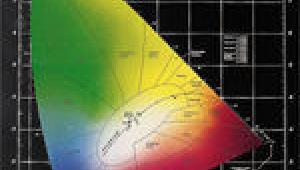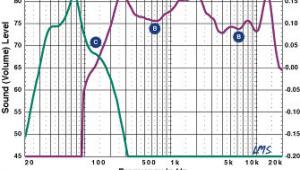How Do You Review 3D, Anyway? Page 2
Is it fair for me to say Tron: Legacy has poor 3D on my screen when it may well look better on someone else’s? Conversely, the (live-action) movie I’ve found most impressive so far is Drive Angry, which has a terrific and fully convincing sense of 3D depth in every shot. But the 3D in this movie may appear exaggerated or artifacty on a different display with a wider parallax offset. When Tom Norton reviewed this one (September 2011), he thought a lot less of it than I do.

Another common problem with 3D viewing is an artifact known as crosstalk or ghosting, where information from one eye view intrudes into the other, leaving a ghostly double image. It’s hard to describe, but it’s very distracting when you see it. Some displays are more prone to this than others. Reportedly, DLP screens are mostly immune, LCD is most likely to suffer from it, and plasma falls somewhere in between. The exact cause of 3D ghosting is unclear. The screen’s pixel refresh speed seems to play a part (which would explain DLP’s advantage), as does too much parallax offset. On my JVC D-ILA projector, ghosting is really bad if I try to watch 3D immediately after I turn on the unit. After about half an hour of warm-up, ghosting is noticeably reduced. Does heat from the lamp and other components make a difference? I just don’t know.
There’s been a great deal of debate about how much the content itself is responsible for ghosting. Some viewers argue that ghosting is solely the fault of the display, not inherent to the disc content. While that might sound plausible, I can’t help but notice that certain 3D Blu-rays (such as Dinosaurs Alive!) and video games seem to trigger ghosting issues on a wide variety of displays. Just about everyone who’s played the PS3 game Killzone 3 in 3D has complained about the severe ghosting during the game’s cut-scenes. Some of them are borderline unwatchable on my projector. I have to assume that there’s something in the way the content is authored that interacts with the displays to create ghosting.
Should we knock points off a Blu-ray’s video score for an issue that may or may not be the disc’s fault? If you look up reviews for any particular Blu-ray 3D Disc across a variety of publications, you’ll inevitably find a big disparity in how the disc is rated, much more than is typical for 2D discs. One source will say a title has good 3D depth but too much ghosting, while another will say the same disc has no ghosting but also almost no 3D depth. Who’s right?
Problem #3: What Makes a Picture Good?
There’s a widespread misconception that reviewing video content is a totally objective process. Either a video transfer is correct or it’s incorrect, and there are cut-and-dried rules to define each. Therefore, it should logically follow that every single review of a specific Blu-ray Disc will rate that disc the same, no matter the publication. In fact, the reviewing process is highly subjective. Ultimately, all Blu-ray reviewers are called to tell the reader whether a particular disc looks good or bad. As with anything else in life, what one person thinks is good may not be what another person thinks is good. A proper review must balance certain objective technical criteria (resolution, color saturation, grain and video noise, etc.) with other subjective criteria (artistic intention, aesthetics, personal preference). In my experience so far, this is doubly true of 3D content.

Over the years, we’ve been trained to judge video quality by certain common factors: How sharp and detailed is the picture? How vivid are the colors? How deep are the black levels? Does the picture exhibit any obvious noise reduction, artificial sharpening, or other distracting digital artifacts? With 3D, many of these factors are thrown to the wayside.
Once we put on a pair of 3D glasses, we automatically expect that the picture will look dimmer. We expect that the colors will be less vibrant. If viewing on a passive 3D HDTV, which halves the picture’s vertical resolution, we even expect that our perception of detail in the image will be less apparent. These are acknowledged as known and acceptable trade-offs for the benefit we receive in return: the 3D-ness of the picture.
When I watch 3D content, I find myself focusing on how 3D the picture is, to the exclusion of those other factors that seem so much more important in 2D. Suddenly, I fixate on how much depth there is in each shot and whether I can see any pop-out effects. Are brightness, contrast, color, and so forth still important in 3D? Yes, of course they are, to some extent. But honestly, I’m willing to cut a disc a lot of slack in those areas if it gives me some good 3D action otherwise. Especially since, as I said earlier, I’m still not sure how much my 3D displays influence those results versus what is actually encoded on the disc. [Ed. Note: Josh’s point here is well taken. When I review a 3D disc, I make no attempt to characterize in detail its color or brightness in 3D for just this reason. But I do try to roughly describe what the inevitable loss of brightness in 3D does to the effectiveness of the presentation, and whether or not the 3D effects, which can be judged in themselves, compensate sufficiently for the dimmer picture.—TJN]

With that in mind, I also have trouble judging exactly what the correct amount of 3D-ness should be. Is depth behind the screen more important than pop-out forward from it, and to what extent for each? Generally, pictures with the most aggressive depth in every shot are incredibly impressive to the eye(s). But is this really better than a picture with a more subtle use of depth? The gonzo 3D effects in Tim Burton’s Alice in Wonderland have a much greater wow factor than the restrained use of three-dimensional space in Coraline. Yet I’d hesitate to say there’s anything wrong with Coraline. Shouldn’t subtlety be appreciated in most art forms? Or is 3D only good for attention-grabbing exaggeration?
These are just some of the issues I struggle with now that I’ve jumped into this bold, new 3D frontier. Perhaps someday the technology will improve to the point that all of these questions become moot. In the meantime, I don’t pretend to have answers, and I remain skeptical of anyone who claims to. The best we can do is to continue an open conversation on the subject.
- Log in or register to post comments

























































